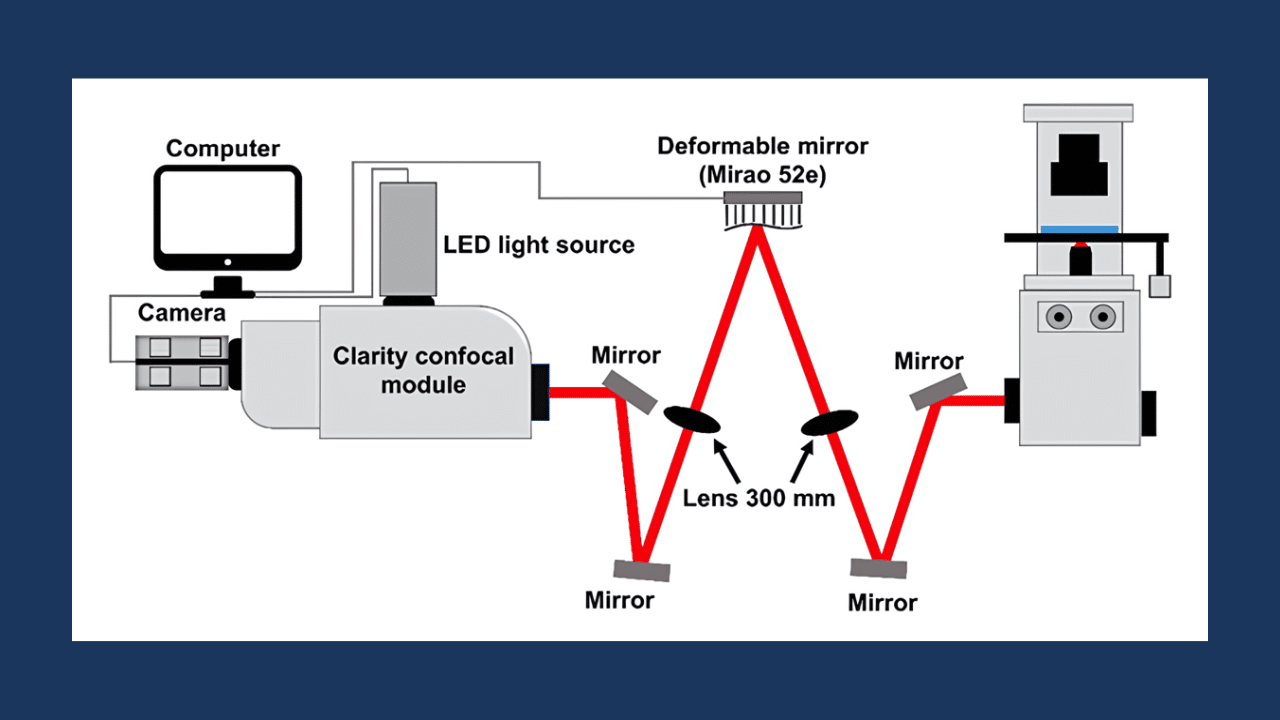Addressing aberrations in high-resolution microscopy
In the paper published in Journal of Microscopy, researchers from Oxford’s adaptive optics group, led by Prof. Martin Booth, describe an implementation of Adaptive Optics (AO) into Aurox Clarity optical setup.
Clarity system is an original, laser-free, spinning disk microscope, which enables the use of incoherent sources for illumination. In this method, optical sectioning is achieved using a patterned disk which is spinning in both illumination and imaging paths.

Like for other high-resolution microscopy methods, here the imaging performance is also compromised by aberrations due to refractive index mismatch and refractive index variations within the biological sample.
In this paper, researchers demonstrated that correction of such aberrations with AO brings significant improvement of the fluorescence signal, contrast, and image resolution. They studied different samples at various depths and significant enhancement of image quality was observed at every depth inside the sample. In some cases, the fine details that were not visible in the noncorrected version became visible in the corrected one.
Implementing AO for improved image quality
To implement AO, researchers detached the Clarity module from the microscope base and created an intermediate pupil plane in which they placed Mirao52e deformable mirror.
For aberration detection, they used one of the sensorless adaptive optics methods which estimates the best correction by detecting sample aberrations from a sequence of images taken when a sequence of predetermined aberrations is applied using deformable mirror.
For each image, an image quality metric was determined and, in this case, researchers used a weighted sum of the power of all spatial frequencies obtained from the image spectrum. This specific metric has been chosen because of the specific image formation process in this microscopy technique. The weighting curve applied on the image spectrum enhances mid-range spatial frequencies, which are the most affected by aberrations (low frequencies vary slightly with aberrations, and high frequencies are largely affected by noise).
Exploring AO options
As a key element of the proposed AO method, the wavefront modulator used was a Mirao 52e deformable mirror, based on a set of 52 electromagnetic actuators, and providing large stroke and high linearity, the latter being a key driver of the accuracy of sensorless AO operation.
Alternatives providing even better linearity, more actuators, or an integrated solution such as an AO module can be found in our product range.
